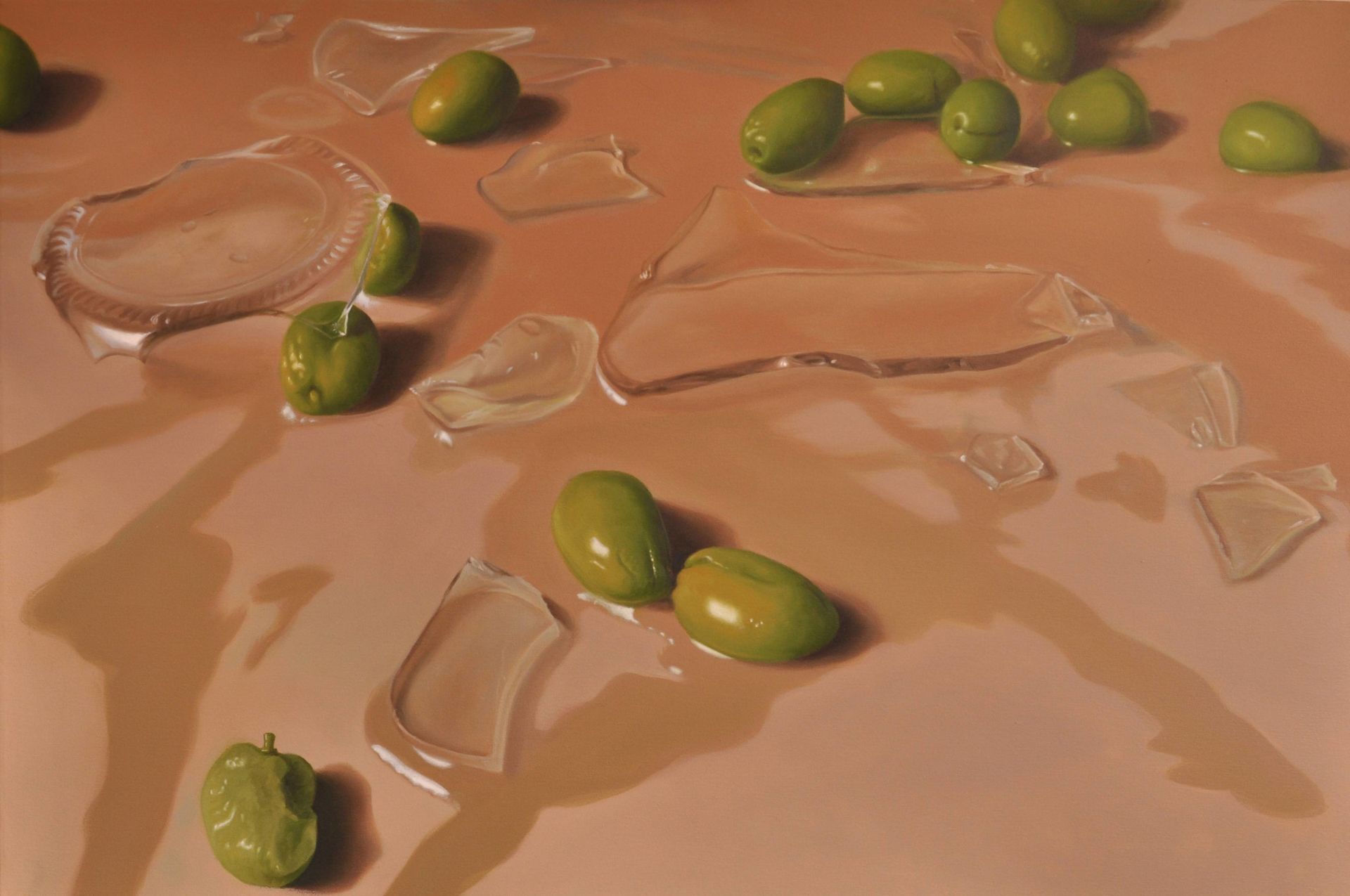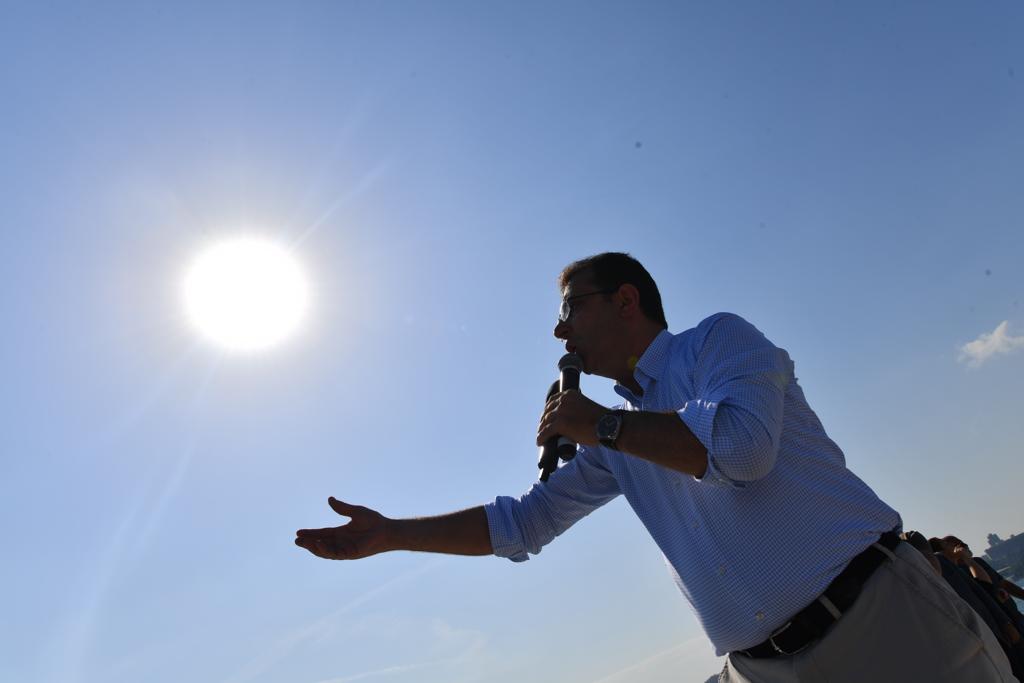When we began writing “Rest in My Shade, a poem about roots,” my co-author Danna Masad and I thought about illustrating it, or using photographs, to bring the words to life. Instead, we decided to use existing Palestinian art to accompany the story, which retells the Palestinian Nakba from the point of view of an ancient, uprooted olive tree. After all, the story that we were writing — the story of expulsion from the land of Palestine — has been represented by Palestinian artists for generations. The visualization of memory, connection, loss, and dispersion, the contemplation of identity, belonging, and hope — it already existed in a rich and diverse body of exile and diaspora art. We didn’t have to create it, only curate it.
As amateur curators attempting to represent Palestinian history “correctly,” with all the politics and aesthetics that implies, we began our search for pieces by crowdsourcing on a public Facebook page. We asked everyone we knew to post their favorite olive tree themed art by Palestinians, expecting a moderate response. We were thrilled to find friends sharing it with friends and those friends sharing it with others, until the page developed into a mini-community of strangers, united by their appreciation of Palestinian art and the centrality of olive trees in that art.
After our initial invigorating success in finding a plethora of gorgeous pieces, we ran into a series of stumbling blocks. We had too many pictures for our short book, and Danna and I had very different tastes. We sent pieces back and forth, argued, agreed, banged our heads on tables. It wasn’t made any easier by the fact that I was in New York City and Danna was in Ramallah. It wasn’t made easier by our deep doubts about our credibility to do the task at hand: curate art for a story about displacement, and about Palestinian history in particular.
It seems that without a national art establishment of museums and archives, journals and exhibitions, many artists made art without thought of preservation or posterity — or with the thought, but without the means.
Moreover, the art had to go with the story. We weren’t simply picking pieces of art to decorate the story, but rather inviting the words and art to synergize. The art had to be diverse (you can’t have a green piece next to a green piece nor a sculpture next to a sculpture). Surprisingly, some of our favorite pieces couldn’t be used because the artists didn’t have high resolution photos of their art. It seems that without a national art establishment of museums and archives, journals and exhibitions, many artists made art without thought of preservation or posterity — or with the thought, but without the means.
Despite all the stumbles, in the end “Rest In My Shade” came fully into being as a story made stronger with art, and artwork made stronger by words. After all our debating and questioning and compromise, “Rest in My Shade” ended up being just what we had dreamed it might be. It includes pieces by Palestinian artists living around the world: Fouad Agbaria, Tamam Al-Akhal, Motaz al-Omari, Hani Amra, Nabil Anani, Ayed Arafah, Rafat Asad, Rana Bishara, Ahmad Canaan, Ziad Yousef Hajali, Michael Hallak, Abdul Rahman Katanani, Suleiman Mansour, Dena Mattar, Marwan Nassar, Bashir Qonqar, Steve Sabella, and Ismail Shammout.
Editor’s Picks — Related Articles:
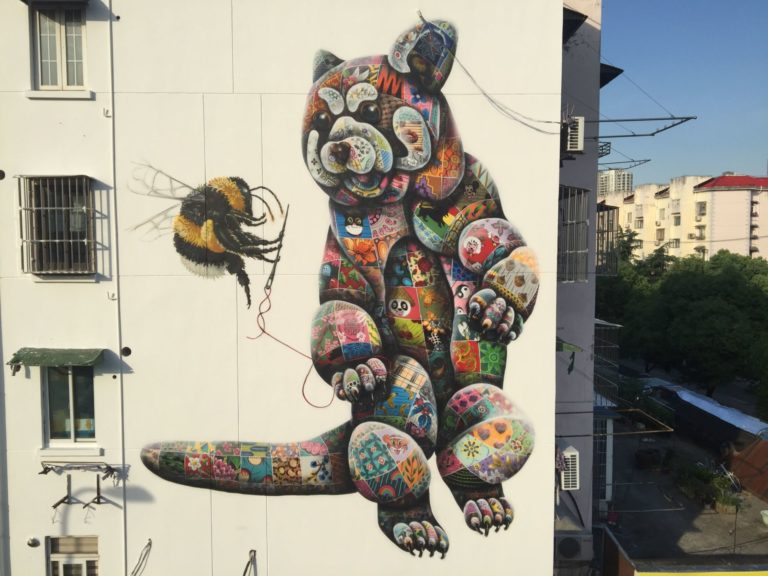
“Using Art to Combat Climate Change: An Interview with Louis Masai”
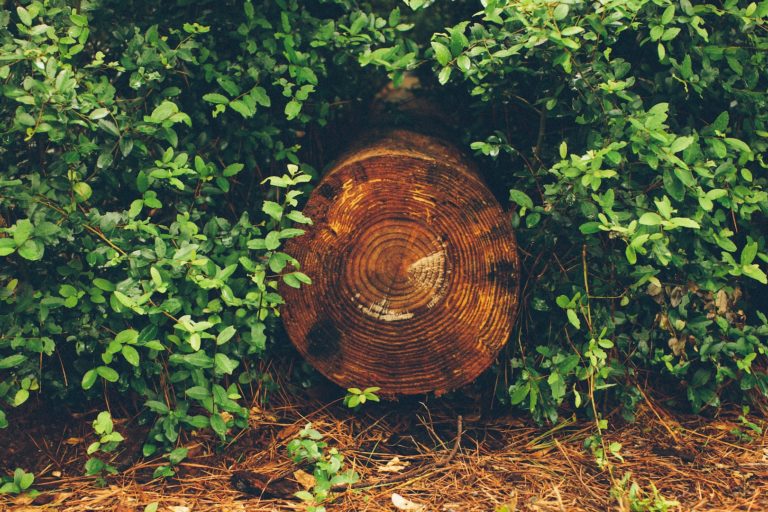
But many, many beautiful pieces of art couldn’t be included in “Rest In My Shade: a poem about roots,” for a variety of reasons. I want to honor them now. Some of my very favorite pieces that you will not see in “Rest in My Shade” are here:
Beesan Arafat’s collage of the Palestinian family, with paint and fabric overlaid, speaks to me with a voice that is both familiar and timeless. The soft shades and intricate designs of the traditional Palestinian clothing juxtaposed against the absence of faces, for me, evokes every Palestinian family, in every village, in every city, in every time period.
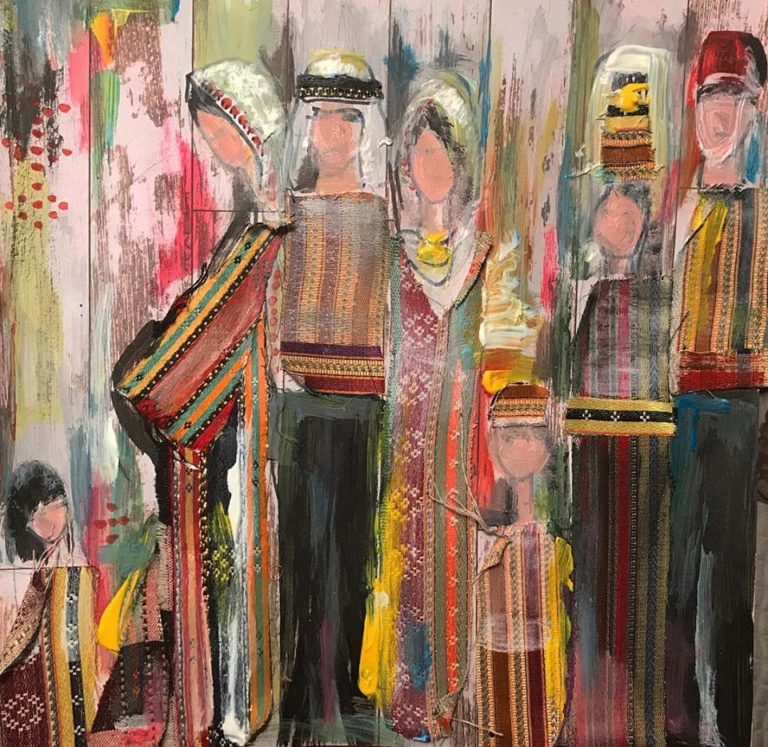
Shaima’ Farouki is one of my favorite up-and-coming artists, maybe because I know her personally to be one of the sweetest human beings around. Shaima’ tries many different styles and materials; this one is actually atypical. I love it because it’s such an unremarkable event in Palestinian culture: a respected elder taking a child to care for olive trees. It’s the way the love of the olive tree is passed down through generations, but it could easily go unnoticed.
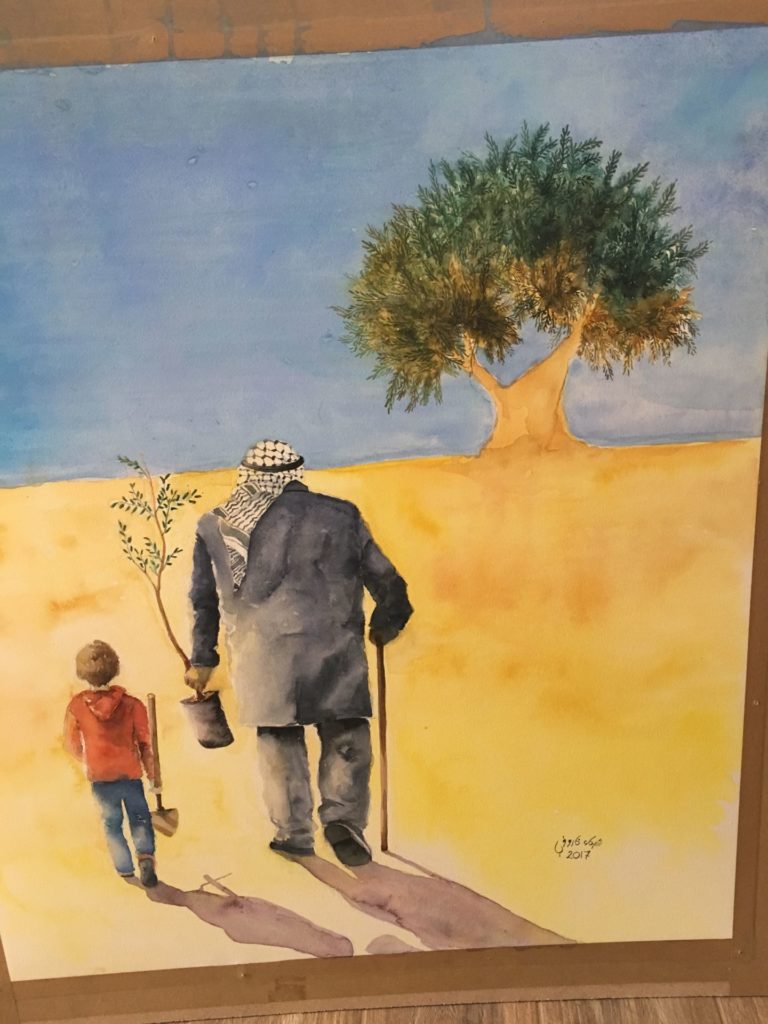
“Olive Intifada” by Nabil Anani is one of tens of pieces this brilliant artist has made that I can’t stop looking at. The red and black reminds of many times during my thirteen years in Palestine, when I saw surreal images of violence. Anani’s new book includes 150 of his color illustrations. You can also see his work here, including some pieces that are featured in “Rest in My Shade.”
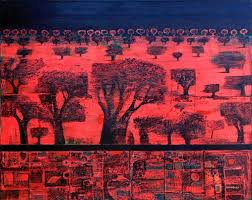
There was an earlier version of the text of the story that used the words “Moody Moon.” I liked the phrase because it showed the moon as mysterious and multi-faceted, and Layla Hamdieh’s painting evokes that mystery for me — the mystery of the earth without human beings, and of nature’s unknowable brilliance in all the senses of that word.
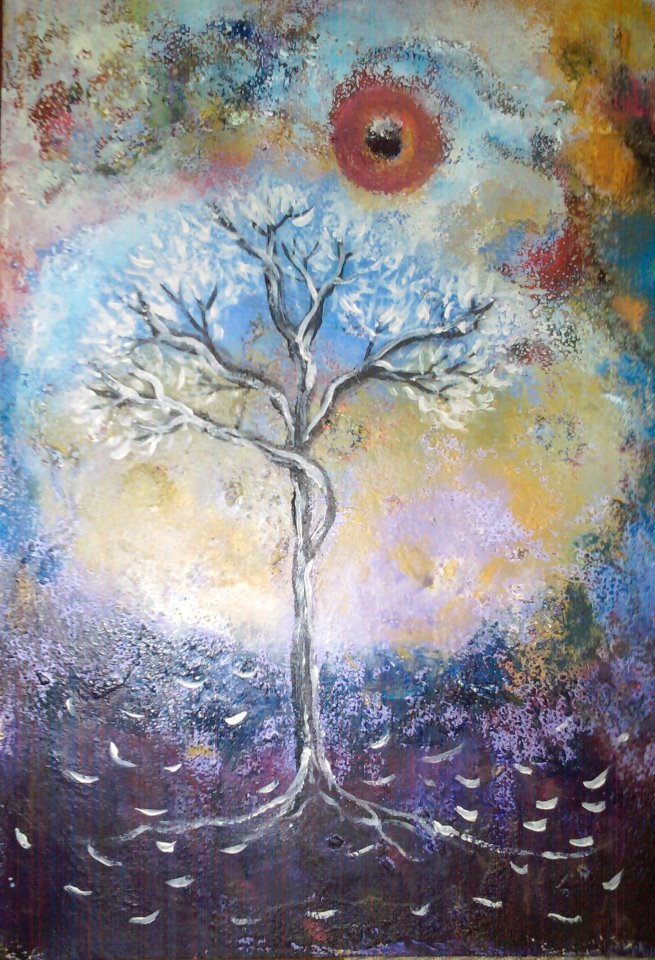
Tamam Al-Akhal’s “Al Tarheell” is so breathtaking because it actually shows the erasure (or attempted erasure) of the Palestinian people. It shows disappearance, absence. (How do you show absence?) Another one of Tamam Al-Khal’s works appears in “Rest in My Shade” along with a piece done by her husband, Ismail Shammout’s. More of their work can be found here.
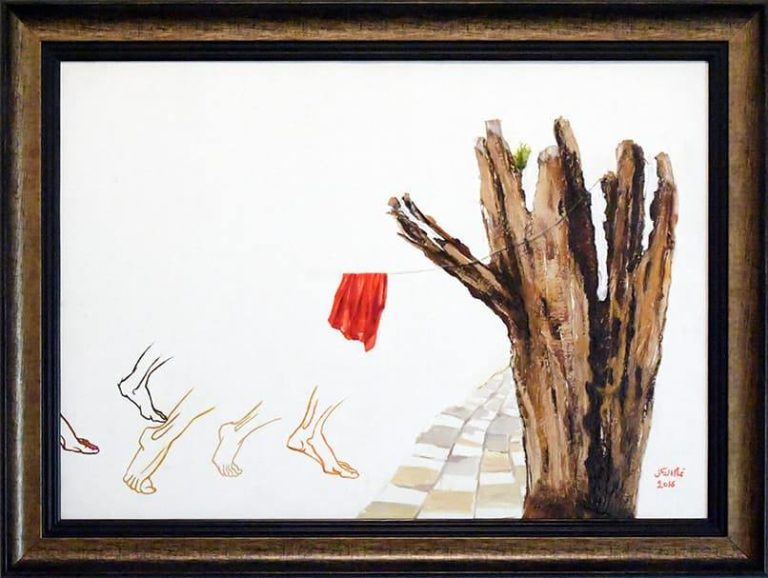
Another painting I loved was a Suleiman Mansour piece that we lovingly referred to as “the whimsical one.” Of his hundreds of works, this one is, to me, one of the happiest. It portrays not a realistic scene, but what it feels like to be in a Palestinian family harvesting olives. The playful cooperation, the “rightness” of the season when communities stop their regular activities to receive the olive trees’ gifts — it’s all in this painting. The season is so magical that farmers can fly. Mansour’s art can be found everywhere. Two more of his pieces appear in “Rest in My Shade.”

One last artist I wish to include here is Brahim Jawabreh, whose work does not include olive trees, but which combines such haunting yet joyful images that I wish he did.
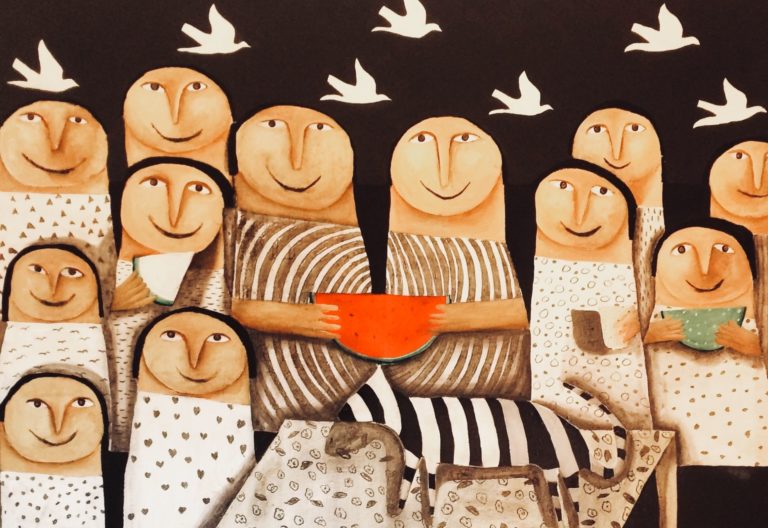
 Nora Lester Murad’s new book is “Rest in My Shade, a poem about roots,” co-authored with Danna Masad and published by Interlink Books with support from the Palestine Museum US. You can find the book in any good, independent bookstore or various online vendors including Amazon. More information is available here.
Nora Lester Murad’s new book is “Rest in My Shade, a poem about roots,” co-authored with Danna Masad and published by Interlink Books with support from the Palestine Museum US. You can find the book in any good, independent bookstore or various online vendors including Amazon. More information is available here.
Cover art by Bashir Qonqar


